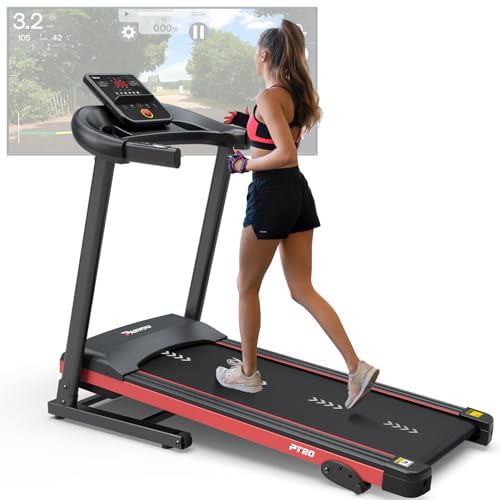Non-Electric Walking Pads: The Future of At-Home Fitness
In the age of digitalization and automation, it may appear counterintuitive to revert to a more traditional and mechanical approach to fitness. Nevertheless, non-electric walking pads have become an increasing popular choice for people seeking a sustainable, simple alternative for keeping their physical health without counting on innovation. In this post, we will check out the benefits, functions, and considerations surrounding non-electric walking pads, eventually making the case for their location in modern physical fitness routines.
What is a Non-Electric Walking Pad?
A non-electric walking pad is a manually operated treadmill that needs no power source other than the force produced by the user's movement. These gadgets are designed to accommodate walking and running, making them appropriate for both light workouts and more intense exercises-- while eliminating the need for electricity.
Secret Features of Non-Electric Walking Pads
| Feature | Description |
|---|---|
| Manual Operation | Relocations with the user's weight and motion. |
| Foldable Design | Easy to store and carry. |
| Adjustable Incline | Allows users to customize the workout strength. |
| Space-Efficient | Perfect for small home. |
| Toughness | Developed with robust products for durability. |
| Budget friendly | Lower initial financial investment than electric models. |
Benefits of Non-Electric Walking Pads
Non-electric walking pads come with a variety of advantages that make them a desirable alternative for many physical fitness lovers. Here are a few of the primary advantages:
1. Eco-Friendly
Among the most compelling factors to pick a non-electric walking pad is that it needs no electricity. In an era where environmental effect is a major concern, using less energy adds to sustainability.
2. Economical
Non-electric walking pads are generally cheaper to manufacture and acquire than their electric counterparts. They likewise get rid of continuous electricity expenses. For users trying to find a cost effective method to remain fit in the house, this is a considerable advantage.
3. Enhanced Stability and Safety
Given that non-electric walking pads normally have a lower speed, users have greater control over their pace. This makes them much safer for those who might have a hard time with balance or coordination, such as the elderly.
4. Low Maintenance
Manual walking pads require minimal maintenance compared to electric designs, which may need routine maintenance and periodic part replacements. This reliability can be a plus for busy people.
5. Versatile Workouts
Numerous models use adjustable inclines that enable users to improve their exercises. This function implies that anyone can tailor their exercise regimen to fulfill their particular objectives, whether it's weight loss or endurance training.
Factors to Consider Before Purchasing
| Factor | Description |
|---|---|
| Size | Guarantee it fits your designated workout space. |
| Weight Capacity | Inspect the optimum user weight to make sure toughness. |
| Incline Levels | Figure out the variety of incline levels ideal for your physical fitness objectives. |
| Mobility | Examine how simple it is to move and save. |
| Build Quality | Choose for long lasting materials to ensure durability. |
1. Size Matters
Before acquiring, consider where the walking pad will be used. Ensure it fits easily in your desired space, allowing sufficient space for safe motion.
2. Know Your Weight Capacity
The majority of walking pads come with a particular weight limit. Make certain to confirm that it can securely support your weight for extended use.
3. Think About Incline Levels
If you prepare part of your physical fitness program around incline training, explore designs that offer numerous incline levels for diverse intensity.
4. Assess Portability
If you have limited space, try to find foldable designs that can be quickly stored away when not in use.
5. Focus on Build Quality
A sound walking pad will extend the life of your equipment. Select designs with positive user evaluates about durability and quality.
Regularly Asked Questions
1. Are non-electric walking pads easy to utilize?
Yes, they are uncomplicated to operate-- you merely step onto the pad and begin walking! read what he said of walking produces the movement.
2. What is the weight limitation for non-electric walking pads?
Weight limits vary by model, generally ranging from 200 to 350 pounds. Always check the requirements before acquiring.
3. Is it appropriate for individuals of all ages?
Usually, yes-- it is safer for older adults due to its lower speed. Nevertheless, just like any exercise program, people should speak with a doctor before beginning.
4. How does a non-electric walking pad compare to a conventional treadmill?
Although both serve comparable functions, non-electric walking pads are less expensive, quieter, and energy-efficient. Conventional treadmills provide advanced functions like digital displays and pre-programmed exercise programs but come with greater expenses and upkeep.
5. Can you operate on a non-electric walking pad?
Yes, lots of designs permit light jogging in addition to walking. However, the experience might differ from electric treadmills, as users have to generate their motion.
Non-electric walking pads represent a useful, sustainable, and inexpensive option for those aiming to remain active while reducing their environmental footprint. With the capability to deliver effective workouts with low upkeep expenses, these walking pads might just be the ideal fit for individuals and households seeking a no-fuss technique to physical fitness.
As the marketplace for fitness continues to develop, non-electric walking pads are a pointer that simple services can often offer some of the very best outcomes. Whether you are a newbie, a seasoned fitness lover, or somebody looking to introduce regular motion into your lifestyle, buying a non-electric walking pad can be a sensible and helpful choice.

